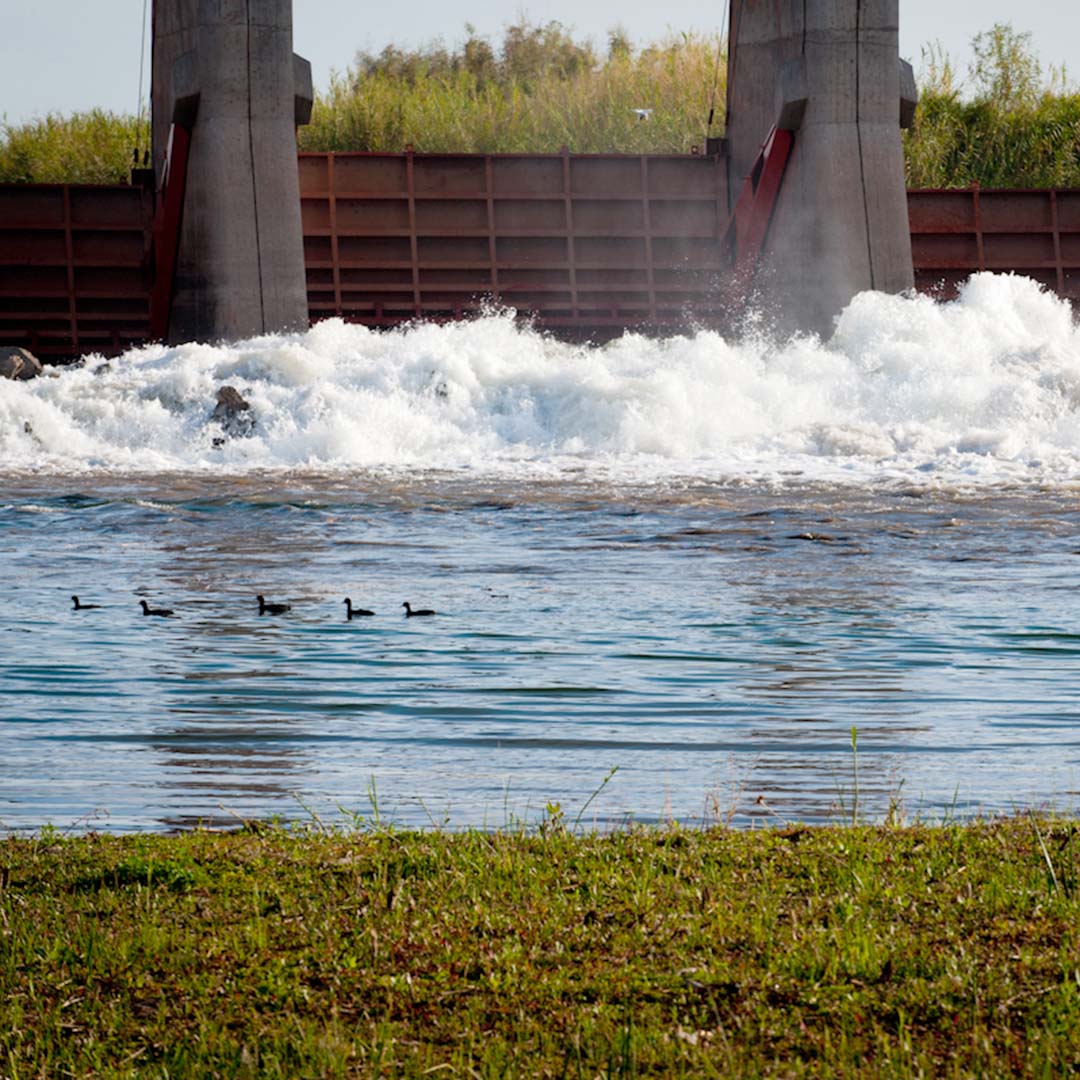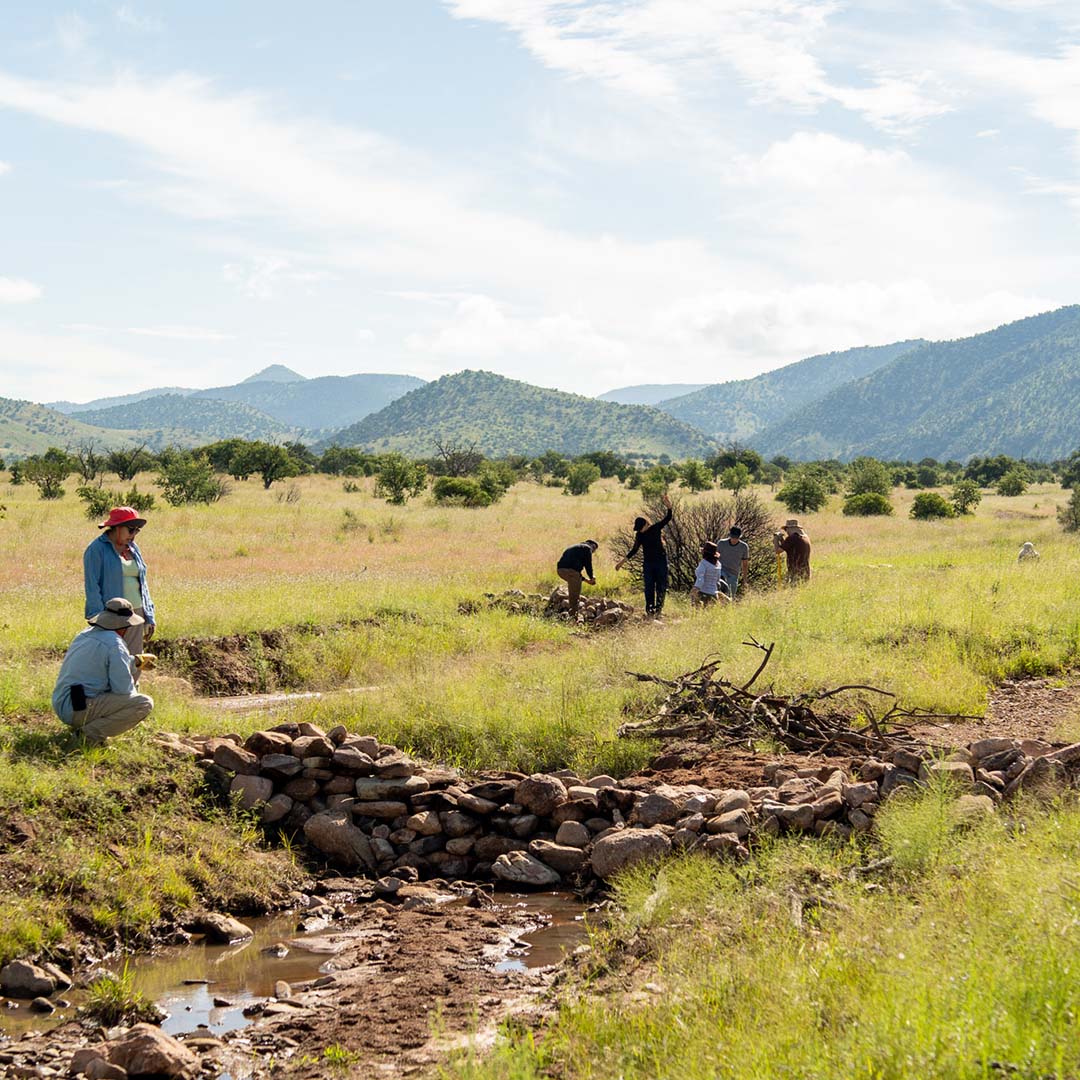 This is the second in a series of reflections on environmental justice from Mariana Sofia Rodriguez McGoffin, a member of Sky Island Alliance’s board of directors (see Part 1). Based in Tucson, Arizona, she writes and teaches about social and environmental justice and is currently working on a podcast. Her interests broadly revolve around the impacts of domestic violence on families and barriers in access to environmental decision-making spaces.
This is the second in a series of reflections on environmental justice from Mariana Sofia Rodriguez McGoffin, a member of Sky Island Alliance’s board of directors (see Part 1). Based in Tucson, Arizona, she writes and teaches about social and environmental justice and is currently working on a podcast. Her interests broadly revolve around the impacts of domestic violence on families and barriers in access to environmental decision-making spaces.

Water is released downstream from the Colorado River in 2014 after a historic collaboration between the U.S., Mexico, and nonprofits. Photo courtesy Bureau of Reclamation.
As a Tucson, Arizona, resident living just an hour from the U.S.-Mexico border and in the heart of the Sonoran Desert, I’ve seen a lot of interesting coalitions doing great work. In this blog, I’ll discuss two such groups that are advancing environmental justice in interesting ways. In both cases, collaboration has been key and the result has been important changes benefiting our borderlands.
The first coalition arose out of an urgent need to address long-ignored issues with Colorado River water.
Over the years, I’ve become increasingly aware of the river’s central but troubled role in providing water to millions of people in the Southwest. The river has been allocated to Indigenous groups, Mexico, and seven southwestern states through a series of treaties and agreements that go back decades and, in some cases, over a century.
Despite being the original inhabitants of these lands, formal allocation of Colorado River water to Indigenous groups has been spotty. Many tribes lack the infrastructure needed to make use of their water rights, and many other tribes aren’t formally recognized by the federal government.
In the context of the border, the U.S. and Mexico also have a contentious past of water sharing. Throughout the early 20th century, Mexico made repeated attempts to acquire water rights to the Colorado River. One such attempt took the form of the 1944 Water Treaty, which now governs sharing between the two countries. Traditionally, any shift in the current setup would be negotiated by the International Boundary and Water Commission in the U.S. and the Comisión Internacional de Límites y Aguas in Mexico. Decisions would be made and recorded in minutes. But in 2005, a lack of trust in the process led stakeholders and NGOs to seek a new path on their own.
Pronatura Noroeste, an environmental group based in Mexico, organized informal workshops for stakeholders to explore avenues of collaboration regarding Colorado River management. As a result, in 2012, a new network was formed that also included the Sonoran Institute, Environmental Defense Fund, and Nature Conservancy. It was formalized by the historic signing of Minute 319 and is widely considered to be the first of its kind. It established a trilateral commitment between the U.S., Mexico, and NGO network to implement a series of pulse flows that released thousands of acre-feet of water, reconnecting the Colorado River with the ocean for the first time in decades and reviving the delta ecosystem.
This fascinating mini-doc from The New York Times shares more of the story and shows what’s possible when diverse groups come together and think outside the box.
Sky Island Alliance

Sky Island Alliance staff and volunteers work with Sonoran ranchers at Rancho Agua de Enmedio to install erosion-control structures benefiting the Río Sonora watershed.
There are other types of binational border networks, one of which I currently have the pleasure of serving as board member: Sky Island Alliance. The nonprofit group works to protect the 55 unique “sky island” mountain ranges in Arizona and Sonora, along with the region’s diversity of life and lands. To do so, it supports wildlife, ranchers, and organizations across the international line.
Sky Island Alliance is working, for instance, to protect and restore watersheds in both the United States and Mexico. It has implemented a spring-surveying program and erosion-control strategy that includes people in both countries. It shares the knowledge that’s produced from these projects with ranchers and other partners. And this ensures trust building and information exchange to strengthen decision-making — a benefit to water and wildlife, neither of which pay heed to political boundaries.
Beyond strengthening relationships and management strategies, Sky Island Alliance also hosts regular volunteer outings that connect people to the land. And its Path of the Jaguar paid internship is helping cultivate young leaders.
The group has been working in the Sky Islands for more than 30 years, and as its connections expand, the benefits to the region will also diversify and grow.
The Path Ahead
The cases discussed here highlight how NGOs can create avenues of communication that extend beyond formal legislation and policy. They also highlight how groups on the ground can organize to direct resources toward specific environmental goals. When people come together and share their unique knowledge and values, unprecented collaborations are possible, even among traditionally divided interests.
And at last we can begin to advance true procedural justice, with all stakeholders at the table, harms mitigated, and benefits distributed fairly.
In the arid Southwest, unfortunately equity hasn’t often been central in decision-making. Indigenous groups (and many others) have been actively excluded from spaces and have carried disproportionate burdens as a result. There is still great injustice, particularly in the context of national borders where one country’s activities can harm another’s people, wildlife, and lands.
But with broader participation of the kind seen in the coalitions mentioned, we can hope for a better future and much needed transformations.
